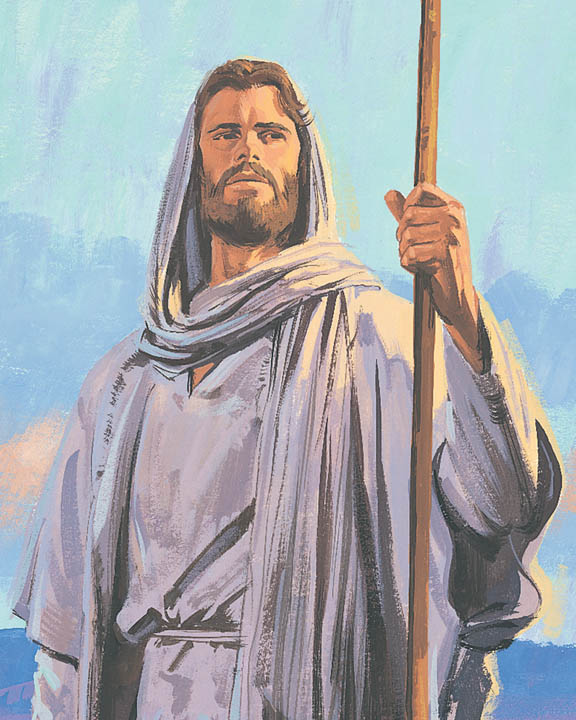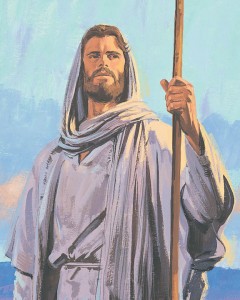Jesus Christ’s Church Carries His Name
Brian is a BYU student and member of The Church of Jesus Christ of Latter-day Saints (sometimes known as the “Mormon Church” by the media). He is currently taking a religion course at Brigham Young. Below is a paper that he wrote after being inspired concerning the Restoration of the Gospel of Jesus Christ and the ushering in of that Gospel through the Prophet Joseph Smith.
What does the name of the Mormon Church, better known as The Church of Jesus Christ of Latter-day Saints really mean? Well, lets’ take a few minutes, and analyze it. We will come to see after reading a few New Testament passages, especially those contained in Matthew chapter 24, that this name is much more significant than most people think.To the well-read lector of the New Testament, it is common knowledge that the people who followed Jesus Christ were referred to as saints. In his epistle or writings to the Romans, chapter 15, Paul writes, “But now I go unto Jerusalem to minister unto the saints.”
Now the true question is, was there a defined organization of saints? How were they governed? Again, we can turn to the writings of Paul and read that Jesus Christ actually organized a church. “And he gave some, apostles, and some prophets, and some evangelists; and some, pastors and teachers; For the perfecting of the saints,” (Ephesians 4:11-12).
Later in Matthew 24, we learn that something was to happen to this church, and that it would be lost. So what would happen to the saints? … Let’s find out.
The chapter of the New Testament takes place in the final week of the life of Jesus Christ. He is alone with his 12 apostles, and some begin to ask him questions concerning the end of the world. Knowing beforehand what would happen to his church in the future, Jesus begins to answer these questions. The following are some of the most important verses of scripture every recorded.
Referring to his 12 apostles Jesus says, “Then shall they deliver you (the apostles) up to be afflicted, and shall kill you, and ye shall be hated of all nations for my name’s sake” (Matthew 24:9). In other words, Jesus foretold the future murders of the leaders of his church, but what did He say about the saints?
In Matthew 24:11, Christ says, “And many false prophets shall rise, and shall deceive many.” If we take a moment to analyze the history of Christian churches, we will come to find that all of this has taken place.
All of the 12 apostles and authorized leaders of the original church of Jesus Christ were killed. It is common knowledge, that Peter was crucified in Rome, and that the rest of the apostles were hunted down. For a while, the church still existed. Other apostles were called to replace those that had died, for example Mattias and Paul were both called to be apostles to fill vacant spots in the organization that Christ created.
Sadly around, 80 AD all of the apostles were murdered. And just as Christ said, false teachers and prophets started to arise. Without true leaders, confusion spread and unison was lost. The true teachings of Jesus Christ were changed and altered by false prophets. Please take a few moments to think, what happened to the original church of Jesus Christ?
Around 1500, people in the world started realizing that something wasn’t right. The Bible was finally printed and introduced to the common man; what was contained in the Bible didn’t concord with the structure of current religious teachings.
Reformers started to stand up and give their lives to publish the truth to the people. And thus the “protestant churches” were introduced to the world. People like Martin Luther understood that something had been lost. Evidence of the precious statement was shown when Luther, a former Catholic, nailed a long list of doctrinal discrepancies to a Catholic church in Germany.
Although “protestant churches” were started to bring people closer to the truth, they still weren’t able to agree on the exact doctrines of Jesus Christ. Today there are thousands of different protestant churches, each with different doctrines and structures. So the million-dollar question is, which church is the true one?
In 1830, after the world had been prepared to have religious freedom, in the United States, the Church of Jesus Christ of Latter-day Saints believes that the one, original, true, church was restored to the earth by Jesus Christ himself. Once again, a Prophet and 12 apostles were called and given authority to lead and guide the church.
The “Latter-day Saints” sincerely believe that the Lord speaks again with man, and that he talks directly with his apostles and prophets today, just as the Church was lead originally. Through this Church, the Latter-day Saints affirm that all of the plain and precious truths that were lost have been restored.
An honest seeker of the truth will start to question, could all this be true? Why are there so many churches today, when Christ only formed one? The answer can again be found in Matthew 24, when Christ said, “whoso readeth, let him understand.”
Matthew 7: 7 “Ask, and it shall be given you; seek and ye shall find; knock and it shall be opened unto you. For everyone that asketh receiveth, and he hat seeketh findeth; and to him that knocketh, it shall be opened.”
Read/watch/listen to a talk by M. Russel Ballard (an Apostle of The Church of Jesus Christ of Latter-day Saints) titled “The Importance of a Name“.


